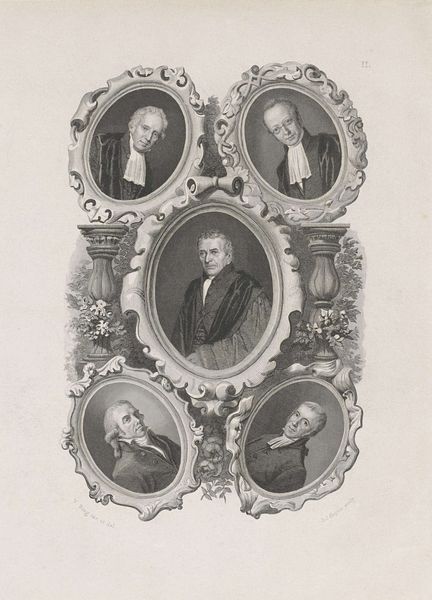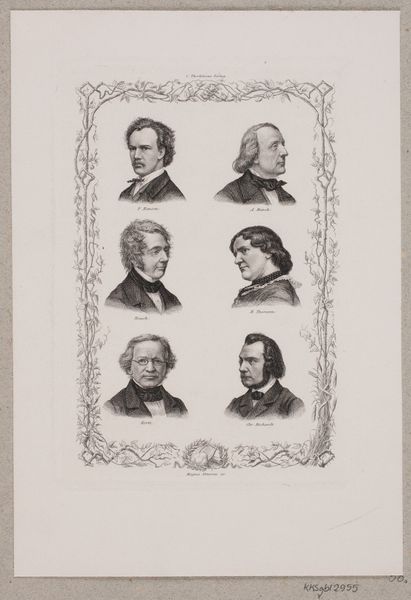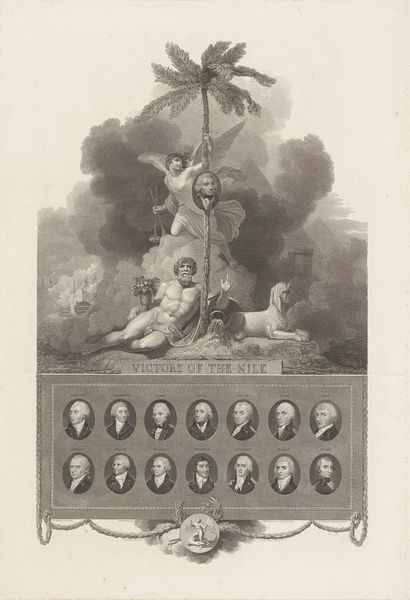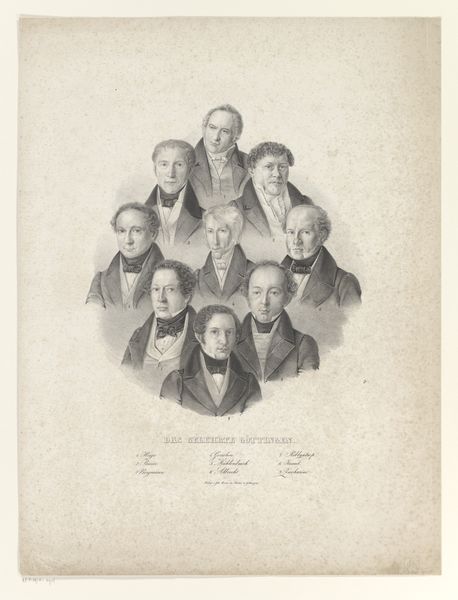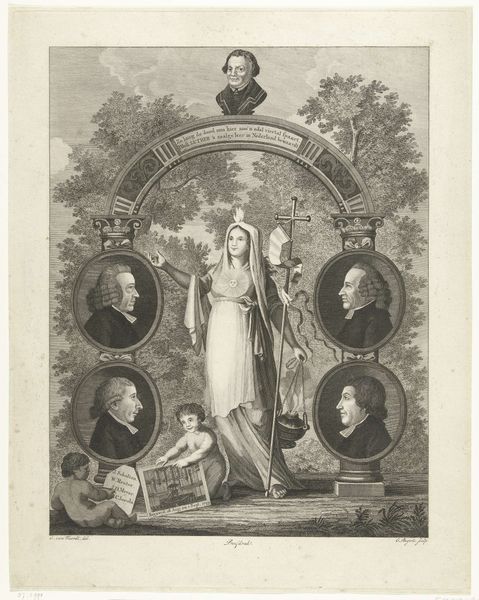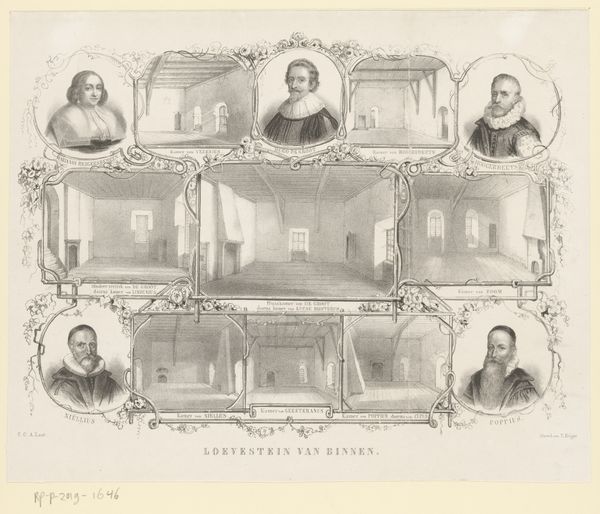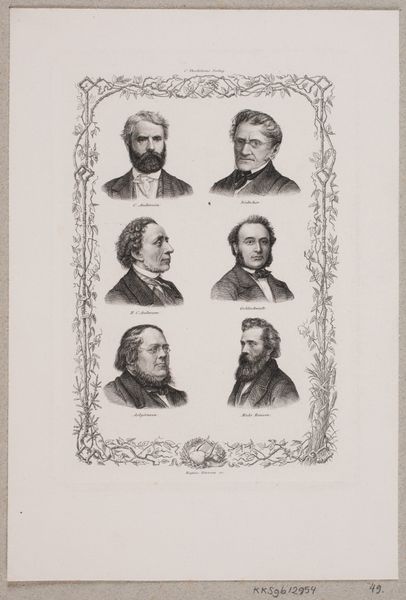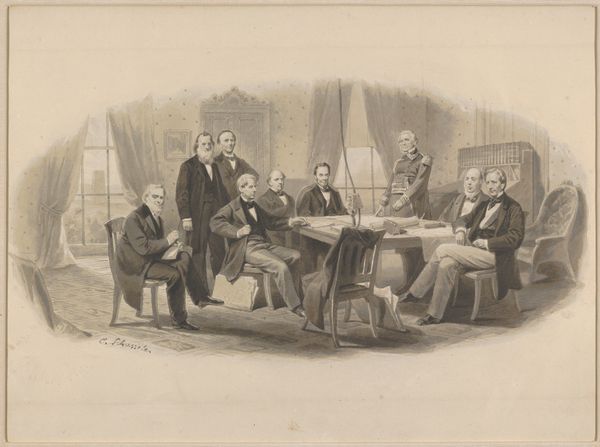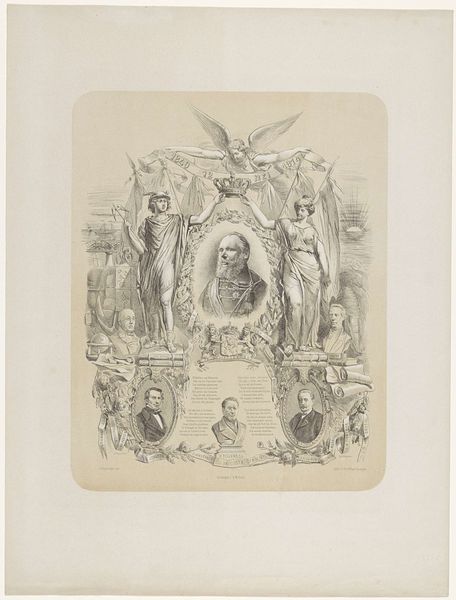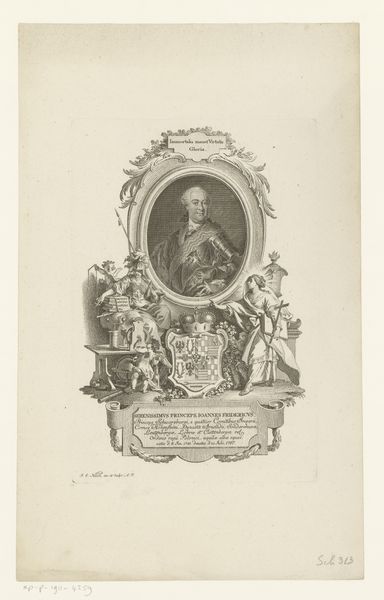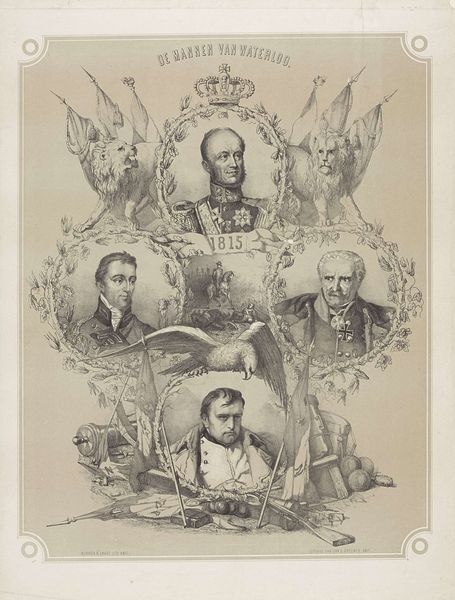
print, engraving
#
portrait
# print
#
cityscape
#
academic-art
#
engraving
#
realism
Dimensions: height 203 mm, width 278 mm
Copyright: Rijks Museum: Open Domain
Curator: Ah, this print offers a glimpse into Leiden’s academic history. It’s titled "Academiegebouw te Leiden en portretten van leidse professoren", by Willem (I) Steelink, and was created sometime between 1836 and 1913. It's an engraving. Editor: Woah, it feels so...stately. I'm immediately struck by the sort of official, formal presentation. All those portraits surrounding the building give me a sense of history, tradition and the weight of academia. Curator: Yes, and consider the context of its creation, specifically in relation to the development of a visual culture celebrating Dutch intellectual achievements. Framing the building with the professors quite deliberately positions the university, the Academiegebouw, as the literal and symbolic center of knowledge production. Think, too, about who gets included, and the power dynamics inherent in choosing who represents the institution. Editor: Exactly! Seeing these elder statesman types all framed in their little ovals, each seemingly in deep contemplation, I start wondering about representation, the power, and privilege inherent in that scene. Are there other perspectives we're not seeing? What stories might the bricks and mortar tell, outside these formal confines? Curator: The "cityscape" aspect invites further analysis of Leiden itself during this period – what social changes influenced both the physical appearance of the university and its internal hierarchies? Was this print intended for an internal academic audience, or was it designed to project a specific image to the wider world? The portraits aren't just neutral likenesses; they represent individuals positioned within the intellectual landscape of the time, don't they? Editor: They do. Each portrait’s setting feels ornate, intentional—it echoes how history is also very consciously "constructed". You frame people—and institutions—in certain ways, to tell very particular stories. This engraving, as beautiful and intricate as it is, prompts questions about the unacknowledged voices or contributions throughout that legacy. It is a frozen, perfect little world. Curator: Well said! Art invites us to delve deeper and reconsider perspectives. Editor: Precisely, and hopefully keep learning.
Comments
No comments
Be the first to comment and join the conversation on the ultimate creative platform.
